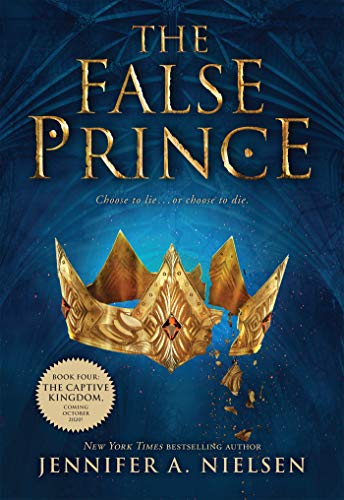-
Virtual Reality—A Whole New World
Welcome to the world of the future—today! Welcome to virtual reality.
What is virtual reality, or VR?
Virtual reality is an artificial environment which is experienced through sensory stimuli (such as sights and sounds) provided by a computer and in which one’s actions partially determine what happens in the environment. It can also refer to the technology used to create or access such an environment. Virtual reality can use devices that are worn or attached to the user’s body, such as headsets, goggles, sensors, or projectors to generate realistic images, sounds, and other sensations that simulate a user’s physical presence and interaction in the virtual environment.
Virtual reality can be used for various purposes, such as entertainment, education, and business. Virtual reality creates the effect of a three-dimensional world that has a sense of spatial presence, meaning that the objects have a location relative to the user’s position. The term virtual reality was coined in 1987 by Jaron Lanier, whose research and engineering contributed a number of products to the VR industry
Virtual reality works by using a combination of computer modeling, simulation, and interactive devices to create a realistic and immersive experience for the user. The user wears a device called a head-mounted display (HMD) that shows a stereoscopic 3D image of a virtual environment.
The virtual environment is generated by a computer program that models and simulates the appearance, behavior, and physics of the objects and living things in the virtual world. The goal of virtual reality is to create a convincing illusion of being in another place or time, and to allow the user to explore and manipulate the virtual environment as if it were real.
There are many examples of virtual reality in different fields and domains. Some of them are:
- Birdly: A VR simulator that lets you experience flying like a bird over various landscapes, such as New York City or the Alps.
- Welcome to Light Fields: A VR app that showcases the potential of light field technology, which captures the intensity and direction of light rays in a scene, creating a realistic sense of depth and parallax.
- Lone Echo: A VR game that puts you in the role of a robot assistant on a space station orbiting Saturn, where you have to solve puzzles, explore the environment, and interact with your human companion.
Virtual reality is used in education for various purposes, such as:
- Bringing science concepts to life with augmented reality (AR): Students can use AR to create and observe phenomena such as tornadoes, beehives, or the solar system in their classrooms, enhancing their understanding and curiosity.
- Exploring the universe with the SkyView app: Students can use this app to identify and learn about stars, constellations, planets, and satellites by pointing their mobile devices at the night sky.
Some of the benefits of VR are:
- Enhancing education and training: VR can provide students and trainees with immersive and realistic simulations of various scenarios, such as flying a plane, performing a surgery, or visiting a historical site, that would otherwise be difficult, expensive, or dangerous to experience in real life.
- Enhancing sports: VR can help athletes improve their performance by providing feedback, analysis, and training in a virtual environment. VR can also provide fans with a more immersive and interactive way of watching sports events.
- Providing entertainment: VR can offer users a variety of fun and engaging experiences, such as games, movies, art, music, and social interactions. VR can also create new forms of storytelling and expression that appeal to different senses and emotions.
- Boosting creativity: VR can stimulate users’ imagination and creativity by allowing them to create and explore their own virtual worlds. VR can also inspire users to learn new skills and discover new possibilities.
So, as you can see virtual reality, or VR for short, can both help us and entertain us. And it’s fun to experience it.
AIME
-
The False Prince (The Ascendance Series, Book 1)
In a discontented kingdom, civil war is brewing. To unify the divided people, Conner, a nobleman of the court, devises a cunning plan to find an impersonator of the king’s long-lost son and install him as a puppet prince.
Four orphans are recruited to compete for the role, including a defiant boy named Sage. Sage knows that Conner’s motives are more than questionable, yet his life balances on a sword’s point — he must be chosen to play the prince or he will certainly be killed. But Sage’s rivals have their own agendas as well.
As Sage moves from a rundown orphanage to Conner’s sumptuous palace, layer upon layer of treachery and deceit unfold, until finally, a truth is revealed that, in the end, may very well prove more dangerous than all of the lies taken together.
From author Jennifer A. Nielsen for Readers 9-12.
-
Superheroes in Real Life: Nurses
Today we celebrate the remarkable superheroes who walk among us every day, tirelessly working to heal, comfort, and save lives. They don’t wear capes or possess superhuman strength, but their impact is nothing short of extraordinary. We’re talking about nurses – the unsung heroes of the real world. These amazing people have a special combination of abilities, kindness, and commitment—making them true superheroes.
There are many different types of nurses, but registered nurses (RNs) are often considered the backbone of the nursing system. Registered nurses can work in any specialty and in various healthcare settings. They help the doctor and other healthcare providers in taking care of you, whether it’s at the doctor’s office, at school, in the hospital, or at your home.
RNs provide and coordinate patient care. They also educate patients and the public about illnesses, diseases, and health conditions. They’re licensed medical professionals who work with patients, doctors, and other health care workers. RNs can provide a high level of direct care to patients, while nurses like licensed practical nurses are more focused on assisting RNs or doctors.
There are several ways to study to become a nurse. Once you finish high school, you can study to get a Bachelor’s degree in nursing (BSN), which typically takes 4 years. Or you can get an Associate’s degree in nursing (ADN) or an Associate of Science in nursing (ASN), which usually takes about 2 to 3 years. Some nurses get a diploma in nursing from a hospital or medical center (these aren’t as common as they used to be), which typically takes 2 to 3 years.
In nursing school, student nurses study anatomy and physiology. They also study psychology, along with social and behavioral sciences, and microbiology. Nursing students gain hands-on experience by working with licensed nurses and patients.
All RNs are licensed by the state where they work. Graduating from an approved program and passing the National Council Licensure Examination is required for licensing. Other requirements vary by state. Certain specialties have professional associations which offer certification for RNs. This is usually not required, but it conveys a certain level of mastery and competence, and some employers prefer it.
Nurses can work in a wide variety of specialties with many different patient populations. They can also work in a variety of settings, including:
- schools
- camps
- prisons
- nursing care facilities
- hospitals
- operating rooms
- home healthcare
- doctor’s offices
Different specialties and units nurses may focus on can include:
- pediatrics
- neonatal intensive care unit (NICU) or pediatric intensive care unit (PICU)
- labor and delivery
- perinatal, encompassing pregnancy, birth, and the first few months of infanthood
- developmental disability or issues, helping people with Down syndrome or autism
- endocrinology, focusing on endocrine disorders like thyroid issues and diabetes
- forensics, working with crime victims
- emergency room
- operating room
- oncology, working with those who have cancer
- dialysis, working with patients, going through dialysis and providing education
- cardiovascular, focusing on the heart and blood vessel disorders
- pain management, helping those with acute or chronic pain
- infection control, focusing on preventing the spread of viruses and bacteria, similar to a public health nurse
- psychiatric nurse, treating patients with mental health disorders
- refugee nurse, who often works with Doctors Without Borders or other organizations
So, as you can see, nurses can be involved in almost any area of healthcare or medicine. They truly are superheroes!
AIME
-
The Dragon Warrior
As a member of the Jade Society, twelve-year-old Faryn Liu dreams of honoring her family and the gods by becoming a warrior. But the Society has shunned Faryn and her brother Alex ever since their father disappeared years ago, forcing them to train in secret.
Then, during an errand into San Francisco, Faryn stumbles into a battle with a demon–and helps defeat it. She just might be the fabled Heaven Breaker, a powerful warrior meant to work for the all-mighty deity, the Jade Emperor, by commanding an army of dragons to defeat the demons. That is, if she can prove her worth and find the island of the immortals before the Lunar New Year.
With Alex and other unlikely allies at her side, Faryn sets off on a daring quest across Chinatowns. But becoming the Heaven Breaker will require more sacrifices than she first realized. What will Faryn be willing to give up to claim her destiny?
From author Katie Zhao for Readers 8-12.
-
Party Planning 101—Creating Unforgettable Celebrations
Hey there, aspiring party planners and creative minds! Hang on as we discover the art of planning the perfect party. From choosing a theme that sparks the imagination to organizing fun games and activities, we’ve got you covered with expert tips and tricks to make your next party a roaring success. So, put on your party hats, grab a notebook, and join us as we unveil the essential steps to plan a fun party that will have your guests beaming with delight. Get ready to be the ultimate party planner and create memories that will last a lifetime!
Here are some things you may want to consider:
- Set a budget and stick to it.
- Choose a theme that your guests will like.
- Draw up a guest list and send invitations at least two weeks before the party. You can use online invitations or make your own.
- If you are not having the party at home. Consider another option. Some options are parks, playgrounds, museums, zoos, bowling alleys, ice skating rinks, or indoor play centers. Make sure the venue is safe, clean, and has enough space and facilities for your guests.
- Plan some activities and games for the party.
- Plan and buy party food that is easy to eat and serve. You can have pizza, sandwiches, nuggets, fruit skewers, popcorn, or chips. You can also have some healthy options such as salads, hummus, or cheese sticks. Remember to check for any dietary restrictions or allergies among your guests.
- Source party decorations that fit the theme and color scheme of the party. You can use balloons, banners, streamers, confetti, or posters to decorate the venue. You can also make your own decorations.
- Plan and buy party favors or bags for your guests to take home. You can also make your own favors or bags using paper bags, ribbons, and labels.
- Make a day-of-party checklist to make sure you don’t forget anything on the big day.
When your guests arrive, and the party starts, don’t forget to have fun yourself!
AIME
-
The Captain’s Daughters
For most adolescents, growing up is hard enough when one has both feet planted firmly on the ground. But for mischievous, twelve-year-old sisters Diane and Robin, life is complicated further by the fact that their father, Captain William Marsh, is the commander of the Starship Polaris. Living among the stars provides a never-ending realm of creative possibility for the free-spirited girls’ pranks and adventures.
When aliens bent on profit and revenge kidnap Diane and Robin, only their indomitable spirit, ingenuity, and a common love of trouble allow the pair to escape the alien vessel. Finding their way home seems assured until the sisters realize they have been taken further from home then they could ever have imagined, and that they must evade an enemy who will stop at nothing to get them back into his evil clutches. Blocked by interstellar battles, malevolent creatures, and overwhelming obstacles, the sisters fear they may never find a way to return to their own universe and to the father they love.
From author Doreen D. Berger for Readers 8-12.
-
Lights, Camera, Action! Stepping onto the Stage: Putting on a Play!
Calling all aspiring actors and theatre enthusiasts! Get ready to embark on an exciting adventure as we delve into the exhilarating world of putting on a play. Here, we’ll discover the magic of the stage, where imagination knows no bounds and dreams come to life. Whether you’ve always dreamed of performing in the spotlight or are curious about the behind-the-scenes magic, we’ll explore the art of creating a theatrical masterpiece from start to finish. Get ready for auditions, rehearsals, costumes, sets, and the excitement of opening night. So, raise the curtain, gather your enthusiasm, and let’s dive into the extraordinary world of bringing a play to life!
No matter what you are performing, expect things to take longer than expected. What may seem like a short script when you read it will take longer than you think to rehearse and perform.
Good casting is absolutely vital, and there are multiple considerations. Lead roles should be played by students who can act the part but can also remember more lines and remember cues. It’s easy to want to cast louder students in the main roles but sometimes a larger-than-life student in the lead role can actually detract from the whole performance.
But putting a larger-than-life student in a character role can have a great result. These students are also fantastic to give lines to before or after chorus lines or ad-libbing. (Ad-libbing is where the actors talk freely but in a rehearsed and directed way) Consider the quieter, more serious mannered and reserved students for lead roles. See them come out of their shells!
Cast for the character and not the actor. Choose a student-actor you know will do well, but be open to surprises.
Give less confident students or students that have trouble remembering lines or cues—funny short lines with an easy cue. They’ll get a strong reaction from the line, so they won’t feel discouraged with a smaller part. We should ensure that all actors have an opportunity to shine by nurturing smaller parts. Engaging the actors in the background is key for a successful performance.
There is such a thing as over-rehearsing. You don’t need to get all the parts perfect before moving onto the next rehearsal stage. It’s important to keep things moving as actors can get bored rehearsing the same part over and over. It is better to come back to some parts and if there is a part that is difficult (blocking or lines or something else) move on and come back to it next rehearsal when the group is fresh. (Blocking is the moves or positions the actors take on a stage.)
Fast delivery is a big issue for all performers. It usually affects the middle of a line, where a line is more than one sentence or a lengthy sentence. Words get lost in the middle because it is too fast. It is important to break sentences up and use pauses and inflection. Remember that the audience has never heard the line or the story before. So it is important that the entire line is very clear. Pauses and inflection are important. A pause means a breath, and that is good to use in order to slow down.
Expect the dress rehearsal to take longer than expected, as actors can get distracted by their costumes. It’s important to do a dress rehearsal to get comfortable with the costumes and fix any costume issues. If actors are bringing costumes from home—always have spare costume parts ready to go.
It can be stressful to put on a play and to feel the pressure of an impending audience! There will always be a line forgotten or something that goes wrong—and these things usually turn out to be very funny. So, just do your best and have fun with it! In the end, it really is all about having fun putting on a performance! The show will go on!
Remember, there is a saying in theatre—bad dress rehearsal, great performance!
AIME
-
Jack Zulu and the Waylander’s Key
Jack Zulu and the Waylander’s Key is an enchanting adventure in the tradition of Tolkien and Lewis, as well as Spielberg and Lucas. But this fantastical journey launches in rural West Virginia in the eighties, with a half-Appalachian, half-African kid trying to escape the town he sees defining his small, sad life. Jack discovers a gate hiding a city between twelve realms and finds out where he truly belongs in a surprising, satisfying adventure.
From authors S.D. and J.C. Smith for Readers 9-12.















